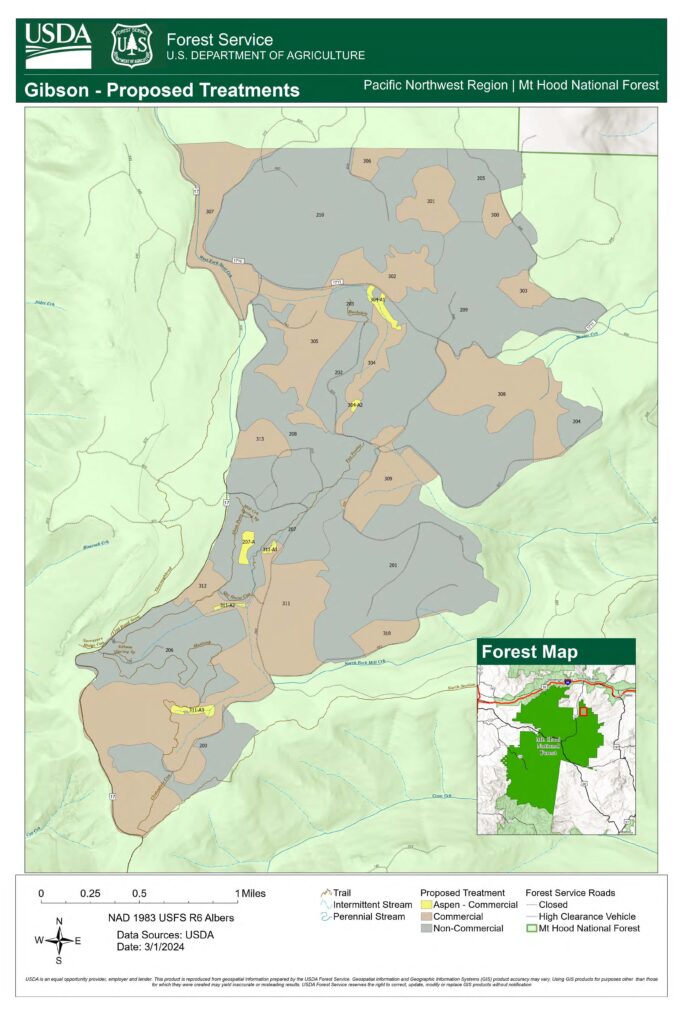Gibson Insect and Disease CE

The public comment period for this project is now open. Deadline for submitting comments in April 15th. If you would like to submit a comment, click here.
Categorical Exclusions (CE) are a type of National Environmental Policy Act (NEPA) project which do not require a more in-depth Environmental Assessment (EA) or Environmental Impact Statement (EIS).
From the Forest Service:
The Gibson Insect and Disease CE is a timber project currently being planned on the Hood River Ranger District. To address insect and disease threats within the project area, the proposed action would reduce stand density on no more than 3,000 acres.
All treatment areas would be thinned from below, with the intention of prioritizing the retention of the largest and healthiest trees available within the stands. A variety of methods, including mechanical and non-mechanical, would be used to implement commercial, non-commercial, and fuels treatments (including, but not limited to mastication, piling, and prescribed burning.)”. Non-commercial treatments may include a combination of small diameter thinning and fuels treatments. Commercial treatments may include a combination of small diameter thinning, fuels treatments, and commercial thinning.
The proposed action also includes treatments designed to protect and enhance existing aspen clones within the project area. Proposed treatments would include removing encroaching conifers within 50 feet of individual aspen trees larger than six inches in diameter. In these areas, conifer canopy would be reduced to 25% to create the early successional, high light conditions required to stimulate new aspen regeneration.
Standing dead trees (snags) are not proposed for cutting unless a safety risk is identified. No old-growth forest conditions exist in the project area and therefore no action is proposed in old-growth.
The proposed action would not construct any system roads. Road maintenance would occur on all roads needed along a timber haul route, and temporary roads are anticipated to be needed in order to facilitate activities. These temporary roads would be decommissioned within three years of project completion.


